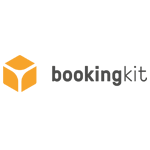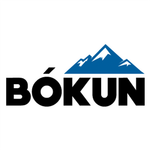Description

Bookingkit

Tripmaker
Comprehensive Overview: Bookingkit vs Tripmaker
Bookingkit and Tripmaker are both platforms designed to serve the tourism and leisure industries, primarily by facilitating booking and management of activities and experiences. Here’s a comprehensive overview of each, based on their functions, market targets, market share, user base, and differentiating factors:
a) Primary Functions and Target Markets
Bookingkit:
-
Primary Functions:
- Bookingkit is a digital solution designed for the management and booking of experiences, tours, attractions, and activities. It provides operators with a comprehensive set of tools, including online booking management, ticketing, customer relationship management, and distribution channel management.
- It integrates with major travel platforms and marketplaces to increase visibility for operators.
-
Target Markets:
- Bookingkit primarily targets small to medium-sized businesses within the travel, leisure, and tourism sectors. These include operators of guided tours, museums, theme parks, escape rooms, and other activity providers.
- It focuses on the European market, offering solutions that are scalable for varying sizes of operations.
Tripmaker:
-
Primary Functions:
- Tripmaker typically involves trip planning and itinerary management. It provides services that help users organize travel schedules, including accommodations, activities, and transportation.
- By assisting with the creation of optimized travel routes and schedules, Tripmaker serves as a personal travel assistant for users or agencies.
-
Target Markets:
- Tripmaker targets individual travelers, travel bloggers, travel agencies, and tour operators. It focuses on providing solutions to enhance the travel planning and organizing process, which is useful for both consumer and business markets.
- Its reach is generally more global, with an eye towards tech-savvy travelers and agents looking for efficient planning tools.
b) Market Share and User Base
-
Bookingkit:
- Bookingkit is one of the notable players in the European market for activity booking software. While precise market share metrics are challenging to obtain without proprietary financial and market data, Bookingkit has a strong presence in markets like Germany, France, and the broader EU.
- Its user base consists mainly of small to medium-sized tour and activity operators who rely on it for booking management and broader distribution channels.
-
Tripmaker:
- Tripmaker's market share and user base information are less explicitly documented. It serves a diverse, global audience with its itinerary planning functions and has a user base that spans individual consumers, travel bloggers, and businesses.
- The adoption rate is spurred by its applicability to a wide range of travel profiles and preferences, although it may not have the concentrated presence in specific markets like Bookingkit does in Europe.
c) Key Differentiating Factors
-
Bookingkit:
- Integration with Major Platforms: Extensive integration capability with major distribution platforms like Google, Viator, and GetYourGuide.
- Focus on Ticketing and Revenue Management: Strong tools for revenue and customer relationship management tailored for activity providers.
- Support and Compliance for EU Markets: Bookingkit offers compliance tools and support tailored to the EU market's specific regulatory requirements.
-
Tripmaker:
- Itinerary Customization: Strong emphasis on providing personalized trip planning and routing, catering to individual preferences or business clients.
- End-User Focus: Its functionalities are more aligned with end-user travel planning, offering detailed itinerary planning that includes various travel components.
- Global Reach: While Bookingkit specializes in the EU market, Tripmaker aims for a more universally applicable user base by encompassing a broader range of travel scenarios.
In conclusion, Bookingkit and Tripmaker, while operating within the broader travel industry, occupy distinct niches with different primary functions and markets. Bookingkit focuses on the operational and distribution side of activity providers, especially in Europe, whereas Tripmaker emphasizes itinerary creation and management with a more global user orientation.
Contact Info

Year founded :
2014
+49 30 609850330
Not Available
Germany
http://www.linkedin.com/company/bookingkit

Year founded :
2011
+91-70254-47765
Not Available
India
Not Available
Feature Similarity Breakdown: Bookingkit, Tripmaker
When comparing Bookingkit and Tripmaker, both platforms offer solutions for tour and activity providers but may focus on slightly different aspects of the customer journey and business management. Here's a breakdown based on common features, user interfaces, and unique capabilities:
a) Core Features in Common
-
Online Booking Management:
- Both platforms facilitate online bookings, allowing businesses to manage reservations and availability in real-time.
-
Payment Processing:
- Integrated payment gateways to handle transactions securely and efficiently.
-
Customer Management:
- CRM features to manage customer data and communication, ensuring a smooth customer relationship.
-
Inventory Management:
- Tools to manage tour and activity inventories, keeping track of what's available.
-
Integration Capabilities:
- Ability to integrate with third-party services such as accounting software, marketing tools, and other business applications.
-
Reporting and Analytics:
- Features to analyze business performance, booking trends, and other critical metrics.
b) User Interface Comparison
-
Bookingkit:
- Tends to have a more structured and professional design aimed at a business-oriented user base. The interface focuses on ease of navigation with a dashboard showing key metrics and quick access to various tools.
- Traditionally, Bookingkit’s user interface is recognized for its comprehensive and detailed approach, catering to a wide range of business sizes.
-
Tripmaker:
- Often designed with simplicity and user-friendliness in mind, aiming for straightforward processes in booking and inventory management.
- May have a more modern and visually appealing interface, focusing on intuitive design elements that enhance user experience with quick access buttons and streamlined workflows.
c) Unique Features
-
Bookingkit:
- Advanced Marketing Tools: May offer more robust marketing integrations or features, enabling businesses to leverage digital marketing channels effectively.
- Vast Distribution Network: Potentially provides greater integration with larger platforms or resellers, expanding the reach for activity and tour providers.
- Industry-Specific Solutions: More tailored options for specific sectors within the tourism industry, offering templates or features specifically designed for different types of tours and activities.
-
Tripmaker:
- Customizable User Journeys: Could offer more personalized journey maps for customers, allowing for tailored offers and experiences.
- Focus on Small Operators: Might tailor its features more specifically for smaller or more niche operators, adapting pricing or services to smaller scale businesses.
- Innovative Booking Flows: Emphasizes unique booking flows, potentially offering features like itinerary creation or bundling of services which could be more advanced compared to other booking platforms.
Both platforms have developed their unique strengths and tailored solutions to cater to different needs within the tourism and activity sector. When choosing between them, businesses often consider their specific operational requirements, target customer base, and integration needs.
Features

Online Booking Management
Payment Integration
Customer Relationship Management (CRM)
Marketing Tools
Analytics and Reporting
Booking Management
Customer Experience
Analytics & Reporting
Integration Options

Local Insights
Trip Planning
Transportation Coordination
Accommodation Booking
Best Fit Use Cases: Bookingkit, Tripmaker
a) Best Fit Use Cases for Bookingkit:
Bookingkit is a comprehensive software solution designed primarily for the tour and activity sector. It is most suitable for:
-
Tour Operators and Travel Agencies: Businesses organizing tours, adventures, city tours, or themed experiences can benefit from Bookingkit’s booking management features.
-
Activity Providers: This includes escape rooms, cooking classes, workshops, zoos, theme parks, and other venues offering scheduled activities where customer reservations and capacity management are essential.
-
Event Organizers: Companies organizing events, whether small or large, can utilize Bookingkit to streamline their ticketing process and manage attendee information efficiently.
-
Small to Medium Enterprises (SMEs): Businesses that need a robust booking system but may not have the resources for custom software development would find Bookingkit particularly useful due to its scalability and integration options.
b) Preferred Use Cases for Tripmaker:
Tripmaker is typically oriented towards travel planning and itinerary management. It would be preferred in scenarios such as:
-
Travel Agencies and Planners: Those focused on crafting detailed travel itineraries for their clients, covering multiple destinations, accommodations, and activities.
-
Corporate Travel Management: Businesses managing extensive travel arrangements for employees would benefit from Tripmaker’s organizational capabilities.
-
Freelance Travel Consultants: Independent professionals who require a tool to manage multiple clients’ travel plans efficiently.
-
Solo Travelers and Travel Enthusiasts: Individuals who prefer self-planning and require an organized approach to travel can benefit from Tripmaker’s personalized travel design capabilities.
c) Catering to Different Industry Verticals or Company Sizes:
-
Bookingkit is versatile and can serve a range of verticals within the activities sector, from arts and crafts workshops to large-scale tourist attractions. It’s particularly favorable for SMEs due to its scalability, allowing companies to expand their offerings with minimal additional infrastructure investment. Its focus on direct bookings also helps increase revenue for businesses relying heavily on ticket sales and customer flow management.
-
Tripmaker serves both B2B and B2C markets, offering solutions that are equally applicable to individual travelers and travel agencies. It can cater to both small businesses and larger corporations by customizing and scaling its functionalities (itinerary planning, travel documentation, etc.) to fit the business size and needs. This adaptability makes it ideal for diverse travel-related industries and for companies with extensive logistical requirements.
Both Bookingkit and Tripmaker cater to specific needs within the travel and activities market, ensuring that businesses can enhance customer experience, streamline operations, and increase efficiency depending on their specific operational focus.
Pricing

Pricing Not Available

Pricing Not Available
Metrics History
Metrics History
Comparing teamSize across companies
Conclusion & Final Verdict: Bookingkit vs Tripmaker
To provide a comprehensive evaluation and comparison of Bookingkit and Tripmaker, we'll assess each product based on various factors such as pricing, features, user experience, customer support, and overall market reception.
Conclusion and Final Verdict:
a) Best Overall Value:
Bookingkit offers the best overall value for businesses that are looking for a robust, feature-rich solution tailored towards bookings and activity management. It is especially suited for businesses that require a comprehensive toolkit to handle complex booking processes, multilingual capabilities, and integrations with various platforms and payment systems.
b) Pros and Cons:
Bookingkit:
- Pros:
- Extensive feature set including scheduling, ticketing, and resource management.
- Strong integration capabilities with third-party platforms, enhancing functionality.
- Scalable solution suitable for businesses of varying sizes, especially those managing large or complex events.
- Multilingual support which is useful for international businesses.
- Cons:
- Can be overwhelming for small businesses with simple needs due to its extensive features.
- Pricing may be higher compared to more basic platforms, depending on the size of the business and its specific needs.
Tripmaker:
- Pros:
- User-friendly interface that is easy to navigate, making it ideal for small to medium-sized businesses.
- Generally more affordable for businesses that don't need advanced features.
- Quick setup process, allowing businesses to get started rapidly.
- Cons:
- Limited features compared to more comprehensive systems like Bookingkit, which may not suit larger enterprises.
- May not offer the same level of integration or customization options needed by some users.
c) Recommendations:
- For Small to Medium Businesses:
- If your primary need is a swift, easy-to-use system and budget is a critical factor, Tripmaker could be the right choice. It offers essential features at an affordable price with a user-friendly interface.
- For Large Enterprises or Those Needing Complex Systems:
- If you are managing larger scale operations with complex booking demands and require advanced features along with diverse integrations, Bookingkit is likely the better option. Its extensive functionality justifies the investment for businesses that need a robust booking and management system.
In conclusion, the decision between Bookingkit and Tripmaker should be based on business size, budget considerations, and the specific needs regarding features and integrations. Businesses are encouraged to thoroughly explore demos or trials, evaluate their immediate and future needs, and consider customer feedback before making a decision.
Add to compare
Add similar companies



